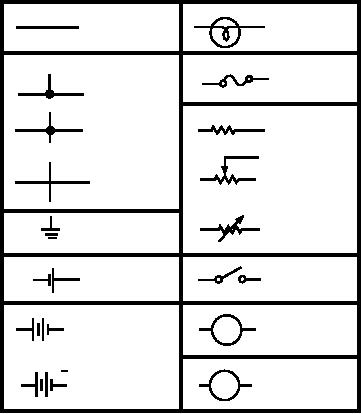
CHAPTER 6
AUTOMOTIVE ELECTRICAL SYSTEMS AND
EQUIPMENT
easier. Therefore, you must understand and use the
INTRODUCTION
drawings and diagrams that are a part of your job.
Support equipment (SE) technicians are required to
No one particular type of illustration is suitable for
maintain automotive electrical systems. For this reason,
all applications, so you will encounter many different
you are required to have a thorough understanding of
types. Additional information on drawings and
automotive electrical systems and associated equip-
diagrams may be found in Blueprint Reading and
ment. With this knowledge, you will be able to
Sketching, NAVEDTRA 14040, and NEETS, Module
correctly diagnose electrical malfunctions and take the
4, NAVEDTRA 14176.
required corrective action. A lack of understanding on
your part can result in wasted man-hours and additional
SCHEMATIC DIAGRAMS
damage to the equipment.
The electrical systems of most automotive equip-
As an AS, your main aid in troubleshooting a
ment have two functions. One function is to supply the
circuit in a piece of equipment is the schematic
electrical energy that is required to crank and operate
diagram. The schematic diagram is a "picture" of a
the engine. The other function is to supply power for
circuit that uses symbols to represent components in the
lights, heaters, electrical accessories, in- struments, and
circuit. Circuits that are physically large and complex
gauges.
can be shown on relatively small diagrams. You should
be familiar with the basic schematic symbols shown in
You will be introduced to the full range of
figure 6-1.
automotive electrical systems, which include batteries,
charging systems, ignition systems, starting systems,
generators, alternators, and auxiliary systems, such as
LAMP
lighting and instruments. However, this course does not
WIRE
INCANDESCENT
cover basic electricity. If you require further study of
CONDUCTORS
electricity, refer to the Navy Electricity and Electronics
FUSE
Training Series (NEETS). These training courses
CONNECTED
(called modules) cover every aspect of electricity that
RESISTORS
you will need on the job. Although you are not required
CONNECTED
FIXED
to complete the series to take the advancement exams,
VA R I A B L E
many of the modules are on your bibliography and are
NOT
used by the exam writers in preparing your
CONNECTED
(POTENTIOMETER)
advancement exams. A well prepared candidate will
study the NEETS modules extensively.
R H E O S TAT
GROUND
DRAWINGS AND DIAGRAMS
CELL
SWITCH
LEARNING OBJECTIVE: Identify basic
automotive electrical circuits. Identify the
V
V O LT M E T E R
B AT T E RY
schematic symbols used in electrical circuits.
Recognize electrical safety precautions.
+
A
To become proficient in your rating, you must be
OR
able to locate parts on equipment, trace circuits, and
learn the operation of many systems and components.
ASf06001
Figure 6-1.--Symbols commonly used in electricity.
Drawings and diagrams are used to make this task
6-1

